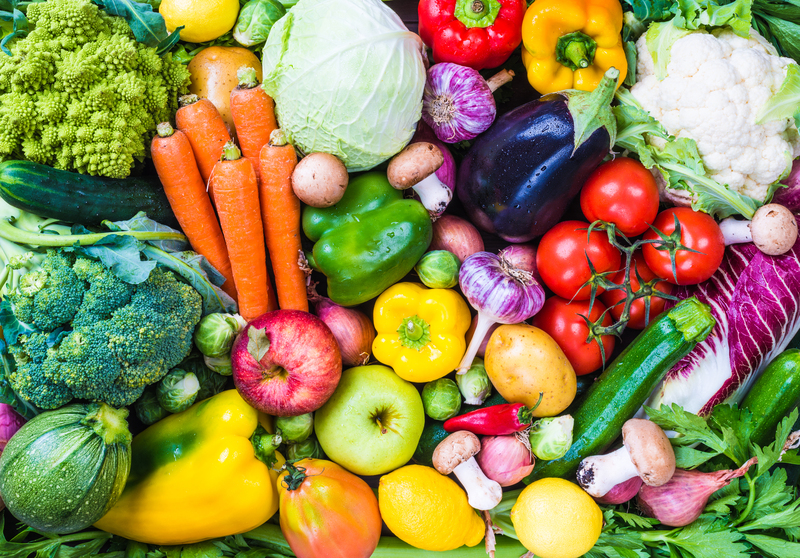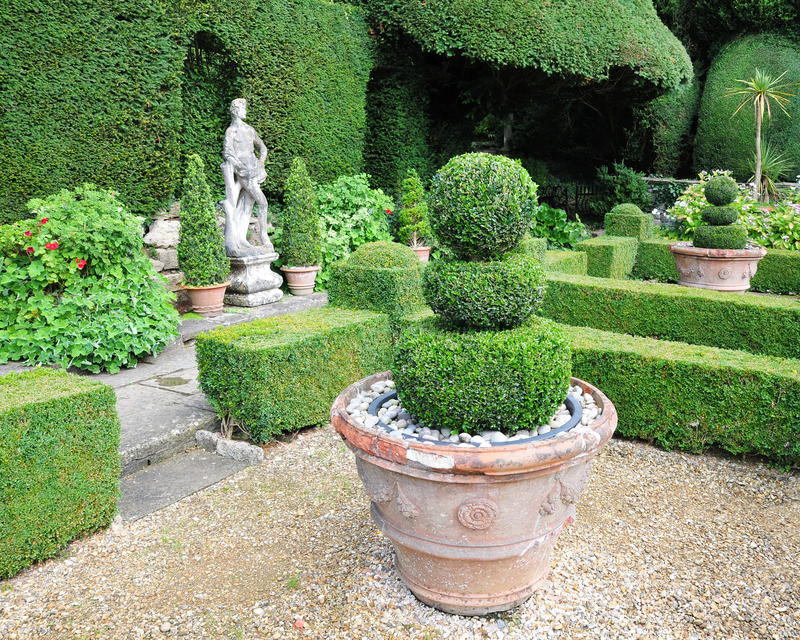Surprising Tropical Species That Succeed In UK Gardens
If you think of UK gardens, you may imagine rolling lawns, neat borders of roses, and perhaps a few topiary hedges. But are you aware that many tropical plants--often considered impossible to grow in temperate climates--are now flourishing in gardens across Britain? It's true! With a little know-how and the right choices, you can enjoy an exotic oasis right at home. This comprehensive guide explores a selection of surprising tropical species that succeed in UK gardens, alongside all you need to know about cultivating them successfully in cooler climes.

Why Grow Exotic and Tropical Species in the UK?
There's a genuine allure to tropical plants. The lush foliage, striking flowers, and bold shapes add drama, intrigue, and a sense of escapism. Traditionally, UK gardeners steered clear of these species, thinking them too delicate for our unpredictable weather. But tropical gardening in Britain has evolved dramatically in the last two decades:
- Innovative plant breeding and importing have expanded the range of hardier tropicals.
- Milder winters--thanks in part to climate change--make it possible to grow a more diverse range.
- Protective microclimates, clever siting, and modern horticultural techniques provide extra chances for tropical success.
In this article, we showcase a carefully chosen selection of exotic species that not only survive, but truly thrive in UK gardens--from coastal Cornwall to more sheltered city plots--plus expert tips for success.
Top Tropical Plants That Succeed in UK Gardens
Let's dive into some of the most remarkable tropical and subtropical plants that defy expectations and bring wow-factor to British soil. Many of these will reward patient gardeners with spectacular displays and a genuine tropical feel.
1. Trachycarpus Fortunei - The Windmill Palm
Few plants evoke the tropics quite like a palm tree. The Windmill Palm (Trachycarpus fortunei) is exceptionally well suited for the UK's climate. Distinguished by its fan-shaped leaves and rough trunk, it tolerates temperatures down to -15?C, making it one of the hardiest palms available.
- Hardiness: To -15?C when established
- Height: Up to 12m, but slow-growing
- Care: Protect the crown in severe winters; thrives in full sun or partial shade
2. Musa Basjoo - The Hardy Banana
For that unmistakable banana-leaf silhouette, Musa basjoo is an excellent and surprisingly resilient choice. While its bananas are inedible, the huge leaves easily conjure up images of the rainforest, especially when grouped with other bold foliage.
- Hardiness: Root hardy down to -10?C
- Height: Up to 4m with time
- Care: Cut down old stems after frost; mulch thickly in winter to protect roots
3. Fatsia Japonica - Japanese Aralia
The shiny, palmate leaves of Japanese aralia impart an unmistakably exotic feel. Fatsia japonica is a versatile, evergreen shrub, capable of thriving in shade and even urban pollution.
- Hardiness: Down to -10?C
- Height: 2-4m
- Care: Grows in any reasonably fertile soil; ideal for sheltered spots
4. Dicksonia Antarctica - The Tasmanian Tree Fern
With their giant, arching fronds and shaggy trunks, tree ferns stand out in any garden. Dicksonia antarctica is the most widely grown--and, under the right conditions, it can become a stunning focal point for years.
- Hardiness: With protection, survives to -10?C
- Height: Up to 4m
- Care: Best in dappled shade; wrap the crown in fleece or straw in winter
5. Cannas - The Canna Lily
Nothing compares with the massive architectural impact and flaming blooms of cannas. These tropical rhizomatous perennials are easy to lift and store for winter, but in warmer parts of the UK, they can even overwinter outdoors with a thick mulch.
- Hardiness: Down to -5?C if well mulched
- Height: 0.8-1.8m
- Care: Water well in summer and deadhead for more blooms
6. Tetrapanax Papyrifer 'Rex' - The Rice Paper Plant
If you long for dinosaur-sized leaves, Tetrapanax 'Rex' is a must-try. Its huge, felted, lobed leaves bring instant drama and height, making it the backbone of many contemporary tropical gardens in the UK.
- Hardiness: Down to -10?C
- Height: 3-5m
- Care: Keep in check--can spread vigorously; cut back if space is limited
7. Hedychium - The Ginger Lily
Ginger lilies bring not only lush strappy leaves, but also glorious, fragrant blooms in late summer and autumn. Certain species, such as Hedychium densiflorum and Hedychium 'Tara', are robust enough for most UK gardens.
- Hardiness: Down to -5?C with mulch
- Height: 1-2m
- Care: Mulch in winter and provide a sunny, sheltered spot
8. Eucomis - The Pineapple Lily
Eucomis, or pineapple lilies, are bulbous perennials whose quirky flower spikes absolutely live up to their name. They're easy to grow, thrive in pots, and bring a tropical touch to even the smallest urban gardens.
- Hardiness: Down to -5?C with mulch
- Height: 45-60cm
- Care: Well-drained soil and plenty of sun are key
Exotic Species with Hidden Hardiness: More Tropical Plants for British Gardens
Many other exotic plants might surprise you with their adaptability. Consider these honorable mentions to expand your palette, bringing tropical color and form into the British landscape:
- Melianthus major - Honey bush with glaucous, jagged leaves and tall spikes of chocolate-scented nectar in summer.
- Phormium tenax - New Zealand flax, offers spear-shaped, architectural foliage in a rainbow of colors; extremely tough.
- Cordyline australis - Palm-like "Torbay palm" is a familiar seaside sight; super hardy once mature.
- Colocasia esculenta - "Elephant ears," valued for gigantic, heart-shaped leaves, can be overwintered dormant indoors.
- Agapanthus - "African lily" produces globes of striking blue or white flowers in mid-late summer.
- Eryngium agavifolium - "Sea holly" with dramatic, spiky evergreen leaves and thistles.
- Crocosmia - Sword-shaped leaves and fiery flowers resist most pests and offer a tropical punch.
Designing a Tropical Garden in the UK: Key Considerations
Success with tropical gardening in the UK involves a blend of careful selection, creative design, and mindful maintenance. Here are some tips and essential points to consider when planning your own slice of paradise:
1. Microclimates Matter
- Seek out warm, sheltered spots--south or west-facing walls are best.
- Courtyards and city gardens often provide greater winter protection than open countryside.
- Use fences, hedges, or even large-leaved plants as windbreaks.
2. Soil Preparation is Crucial
- Enrich your soil with organic matter for lush growth and improved drainage.
- Most tropical species dislike being waterlogged in winter--raise beds if needed and avoid heavy clay when possible.
3. Layer Bold, Varied Foliage
- Layer plantings from ground covers (like Hostas or Ferns) to imposing mid-height foliage--then punctuate with towering bananas or palms.
- Mix leaf shapes, sizes, and colors for drama and authenticity.
4. Add a Splash of Color
- Use flowering exotics--Cannas, Dahlias, Gingers--for hot, summer-long color.
- Embrace unusual tones: deep burgundy, lime green, or even metallic blue foliage.
5. Factor in Winter Protection
- Be prepared to wrap crowns, mulch roots, and even move some pots under cover in the autumn.
- Burlap, straw, and horticultural fleece can mean the difference between thriving and failure.
- Choose the hardest species as "backbone" plants--use more tender specimens as annuals or in containers.
Tips to Ensure Tropical Plant Success in British Gardens
Growing tropical plants in the UK is both an art and a science. With the right approach, your garden can look lush year-round--and even withstand snowy snaps. Keep these best practices in mind:
- Water Carefully: Most exotics hate being sodden in cold months, but need plenty of water during peak growth (especially bananas, gingers, and cannas).
- Feed Generously: Apply slow-release fertilizer or liquid feeds throughout spring and summer to fuel lush growth.
- Mulch Annually: Protect roots and conserve moisture with bark, straw, or compost atop the soil.
- Prune and Deadhead: Remove old or frost-damaged growth promptly to maintain vigor and tidiness.
- Overwinter Smartly: Move pots to frost-free locations, or lift and store tender tubers and rhizomes in cool, dry conditions.
- Patience Pays Off: Some species (especially tree ferns and palms) are slow to establish. Don't expect "instant jungle" effects overnight!
Sustainable Approaches and Tropical Gardens of the Future
With changing climate patterns, more of these surprising tropical species will become mainstays of the UK landscape. However, it's vital to be mindful:
- Source your exotics from reputable UK nurseries (never collect from the wild).
- Favor species that don't require excessive water or winter energy inputs.
- Balance exotics with native and non-invasive species to support pollinators and wildlife.
Integrating these principles means you're not just enjoying a dazzling, unique space--but creating a resilient and responsible garden.

Famous UK Examples: Inspirational Tropical Gardens
Need a little inspiration for your own exotic oasis? These public gardens illustrate just how far you can push the boundaries:
- Abbotsbury Subtropical Gardens, Dorset - Famous for its dramatic jungle walks, mature tree ferns, and colossal bananas.
- Tresco Abbey Gardens, Isles of Scilly - Home to such a diversity of tender species it's often compared to the Mediterranean.
- Logan Botanic Garden, Dumfries & Galloway - Showcasing New Zealand, South African, and South American exotics thriving outdoors.
Conclusion: Transforming Your British Garden with Surprising Exotic Species
Don't let latitude limit your imagination! There are countless tropical and exotic species that succeed in UK gardens--from the stately windmill palm to the show-stopping rice paper plant. With a blend of intelligent plant choices, thoughtful site selection, and a dash of horticultural daring, you can create a lush oasis that makes every day feel like a holiday. Whether you transform a patio with giant bananas or design an entire border of jungle drama, the delights of a tropical paradise at home are now within reach.
Ready to start your exotic adventure? Explore reputable local nurseries, experiment with different combinations, and above all, have fun bringing the vibrant world of tropical gardening into your British backyard. The results may just surprise you--and your neighbors!
Keywords: tropical plants for UK gardens, hardiest tropical species UK, tropical gardening in Britain, exotic plants for British climate, UK tropical garden tips, surprising hardy exotics.